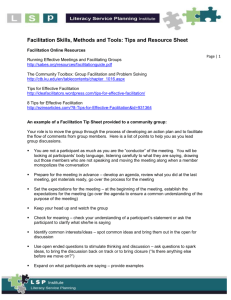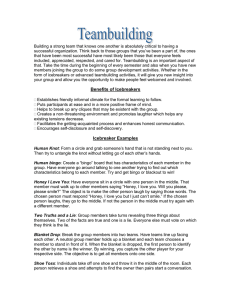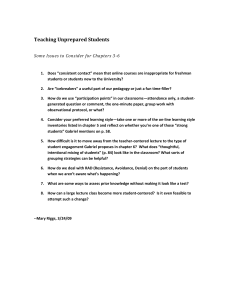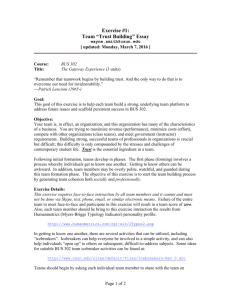Icebreakers (opens in a new window)
advertisement
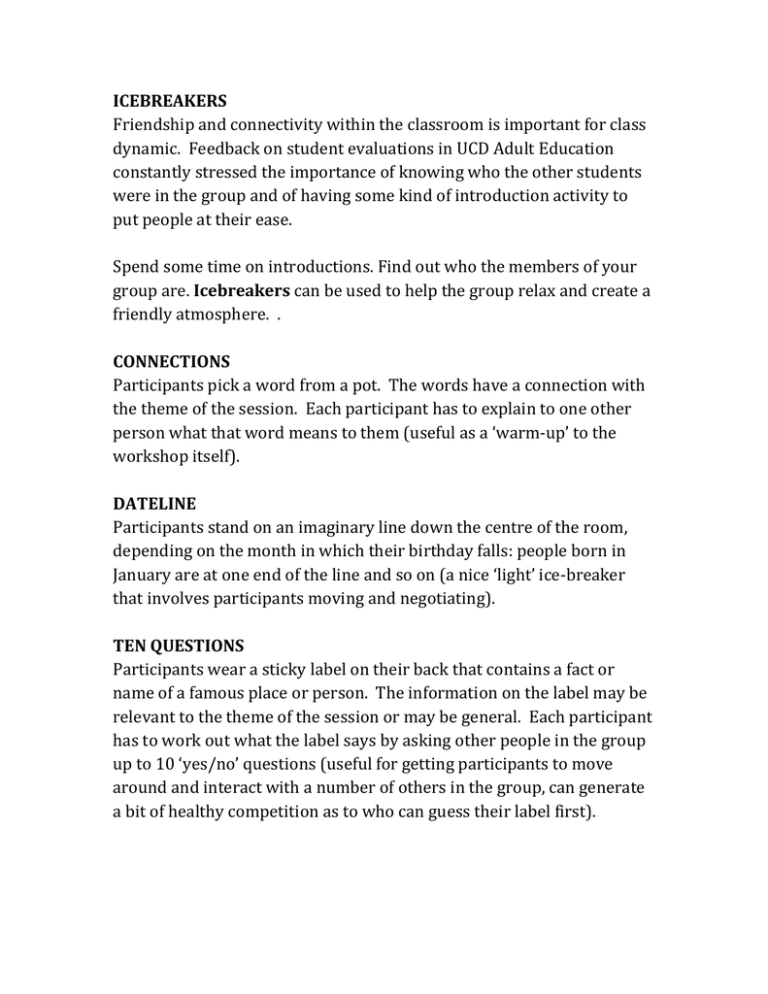
ICEBREAKERS Friendship and connectivity within the classroom is important for class dynamic. Feedback on student evaluations in UCD Adult Education constantly stressed the importance of knowing who the other students were in the group and of having some kind of introduction activity to put people at their ease. Spend some time on introductions. Find out who the members of your group are. Icebreakers can be used to help the group relax and create a friendly atmosphere. . CONNECTIONS Participants pick a word from a pot. The words have a connection with the theme of the session. Each participant has to explain to one other person what that word means to them (useful as a ‘warm-up’ to the workshop itself). DATELINE Participants stand on an imaginary line down the centre of the room, depending on the month in which their birthday falls: people born in January are at one end of the line and so on (a nice ‘light’ ice-breaker that involves participants moving and negotiating). TEN QUESTIONS Participants wear a sticky label on their back that contains a fact or name of a famous place or person. The information on the label may be relevant to the theme of the session or may be general. Each participant has to work out what the label says by asking other people in the group up to 10 ‘yes/no’ questions (useful for getting participants to move around and interact with a number of others in the group, can generate a bit of healthy competition as to who can guess their label first). BADGE Each participant is given a badge/sticker and asked to write their name and draw an image of something that represents them. In pairs, participants then discuss why that image is important to that person’s identity. This can be used as an entry point into a group discussion and also around labelling and how labels/badges are formed and how they might be damaging. Finish task by asking participants to remove the badge/sticker and note how some labels are easier to remove than others. Treasure Hunt: Give the students a list of tasks, e.g. find a classmate who has: a birthday in July, visited Russia, blue eyes, read Ulysses, etc. Then ask the students to mingle and find a person who fits each description. This gets everyone up and moving and talking to each other Interviews/Pair work - Ask students to work in pairs. Get them to find out some information (3/4 set tasks) on the other person. Ask each person in return to report on the other person. Some students don't like talking about themselves and this is a way of getting around this. There are hundreds of possible icebreakers that can be used. An internet search will throw up lots of examples. Only introduce an exercise that you would feel comfortable doing yourself. The key is to ensure people don't feel uncomfortable and that some unity and harmony is achieved within the group. http://adulted.about.com/od/icebreakers/tp/Top-10-Ice-Breakers-Of2010.htm http://wilderdom.com/games/Icebreakers.html http://www.icebreakers.ws/
